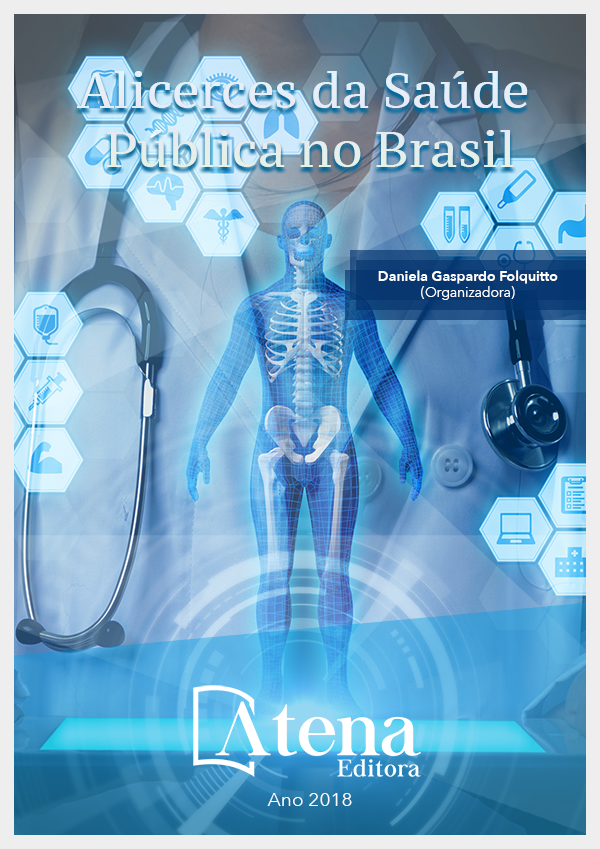
ICTERÍCIA TERAPEUTICA: TERAPEUTICA ADEQUADA
Icterícia neonatal é umaumento dos
níveis séricos da bilirrubina do recém-nascido
(RN), na primeira semana de vida, principalmente
nosRN’s pré-termo. Quando o RN atinge valor de
5 mg/dL na corrente sanguínea, torna-se visível
a cor amarelada na pele e nas escleróticas –
aparece primeiro na face e depois no abdome
e nos pés. Essa alteração pode decorrer do
próprio processo fisiológico ou de patologias
associadas e, geralmente, retorna aos valores
normais de bilirrubina na segunda semana.
No sentido de promover melhor entendimento
fisiopatológico da IN e, consequentimente,
novas modalidades terapêuticas eficientes
no controle e na prevenção da toxidade pela
bilirrubina, propomos nesta pesquisa realizar
uma revisão atualizada. Utilizou-se como
método a revisão literária integrativa nas bases
de dados SCIELO, LILACS, BDENF E MEDLINE,
no período de abril de 2017 a março de 2018,
com os seguintes descritores de busca: icterícia
neonatal, diagnóstico e tratamento da icterícia
neonatal e fototerapia. Forma inclusos artigos
em formato eletrônico, disponíveis online com
textos completos, nos idiomas português, inglês
e espanhol, com recorte temporal de 2010
a 2017. A revisão mostrou que a bilirrubina
absorve luz na região de 400 a 500 nm e,
por esta razão, a fototerapia foi a modalidade
terapêutica mais utilizada mundialmente para
o tratamento da IN, sendo predominante o uso
de lâmpadas fluorescentes brancas e azuis,
luz monocromática azul e lâmpadas de quartzo
halogênicas com filamento de tungstênio.
Conclui-se que a fototerapia possui maior suscetibilidade e menos complicações,
principalmente nos RN’s pré-termo.
ICTERÍCIA TERAPEUTICA: TERAPEUTICA ADEQUADA
-
DOI: Atena
-
Palavras-chave: Icterícia neonatal; Diagnóstico de icterícia; Fototerapia em icterícia.
-
Keywords: Neonatal jaundice; Diagnosis of jaundice; Phototherapy in jaundice.
-
Abstract:
Neonatal jaundice is a increased serum bilirubin levels in the first week
of life, mainly in preterm newborn. When the newborn (NB) reaches values of 5 mg / dl
in the bloodstream, the yellowish color on the skin and sclerotic are visible - it appears
first on the face and then on the abdomen and feet. These changes may be due to the
physiological process itself or associated pathologies and usually returns to normal
bilirubin levels in the second week.With the aim of promoting a better physiopathological
understanding of NJ and, as consequence,to know new efficient therapeutic modalities
in the control and prevention of bilirubin toxicity, we propose in this research to carry out
an updated review. We used the integrative literary review in the databases SCIELO,
LILACS, BDENF and MEDLINE, from April 2017 to March 2018, using the following
search descriptors: neonatal jaundice, diagnosis and treatment of neonatal jaundice
and phototherapy. It includes papers in electronic format, available online with full texts,
in the Portuguese, English and Spanish languages, with a time cut from 2010 to 2017.
The review showed that bilirubin absorbs light in the 400 to 500 nm region and, for
this reason, phototherapy was the most used treatment modality worldwide for the
treatment of NJ, the most prevalent the use of white and blue fluorescent lamps, blue
monochromatic light and halogen lamps with tungsten filament.It is concluded that
phototherapy has greater susceptibility and less complications, especially in preterm
newborn.
-
Número de páginas: 15
- Cláudia Regina Silva dos Santos Cunha


